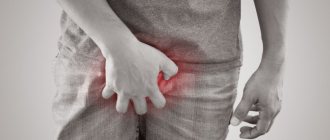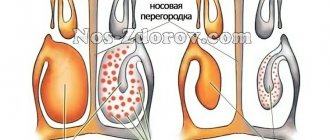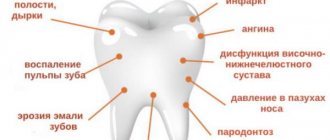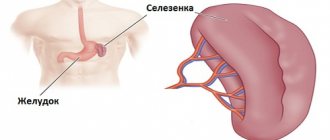Many girls take painful periods as normal. Experts say that such a phenomenon in most cases is a sign of a violation. Various pathologies of the reproductive system can cause cramping pain during menstruation.
Why are periods painful?
Painful periods are those menstrual flows that are accompanied by pain in the lower abdomen throughout the entire period. Increased contraction of the uterine myometrium during menstruation can cause discomfort to a woman, but there is no pain. Its appearance in most cases is associated with the presence of a pathological condition.
Among the common reasons that provoke very painful periods in girls, gynecologists name:
- incorrect position of the uterus;
- underdevelopment of the reproductive organ;
- inflammatory process in the uterus and appendages;
- endometriosis;
- increased excitability of the central nervous system.
What symptoms require you to see a doctor?
When to seek help from a doctor:
- Regular pain.
- For severe pain, which is accompanied by increased bleeding. The situation is accompanied by frequent changes of pads and tampons.
- Painful sensations appear against the background of increased body temperature, chills and sweating. This situation indicates an inflammatory process.
- Discomfortable sensations in the form of itching and burning of the genitals, which indicates an infectious disease.
Algomenorrhea - what is it in women?
When algodismenorrhea is diagnosed, what it is in women and how it manifests itself is unknown to most patients. In gynecology, this term usually refers to menstrual flow accompanied by pain in the pelvic area. Doctors consider this phenomenon as a symptom of possible pathological conditions of the reproductive system. The mechanism of formation of painful sensations can be different:
- Increased synthesis and entry into the bloodstream and intercellular space of prostaglandins, which leads to an increase in intrauterine pressure and the development of myometrial spasm.
- Local vascular spasm causes circulatory problems in the pelvic organs and makes it difficult to remove metabolic products that cause pain.
Primary dysmenorrhea
Primary algodysmenorrhea is painful menstruation that appears during the first 3 years after menarche or immediately after the appearance of the first menstruation. The main manifestation of this form of pathology is pain. There are two types of primary algodismenorrhea:
- compensated;
- decompensated.
A distinctive feature of the compensated form of algodismenorrhea is the constancy of the strength and duration of pain. Throughout the entire period of menstruation, a woman feels pain of the same intensity, which is repeated from cycle to cycle. In the decompensated form, patients experience a gradual progression of pain: over time, the pain intensifies, the woman’s usual lifestyle is disrupted, and her performance decreases.
Secondary dysmenorrhea
Secondary algomenorrhea is painful menstruation that occurs in women after 30 years of age. The pathology occurs in 30% of women of reproductive age, often occurring in moderate or severe form. Doctors often diagnose a combination of algomenorrhea and menorrhagia - an increase in the volume of menstrual discharge. The secondary form of algomenorrhea, which, in addition to pain in the pelvis, is accompanied by other symptoms, is divided into 4 groups in gynecology:
- Secondary algomenorrhea with psycho-emotional symptoms
- anorexia, bulimia, depression, irritability. - Algomenorrhea with autonomic disorders
- accompanied by nausea, hiccups, and bloating. - Secondary algomenorrhea with vegetative-vascular disorders
- dizziness, headaches, fainting, tachycardia, numbness of the extremities. - Algomenorrhea with endocrine-metabolic disorders
- vomiting, itchy skin, joint pain, sudden weakness.
Secondary algomenorrhea: many causes - only one pain
Like any other secondary pathological process, secondary algomenorrhea has a completely precise organic cause, identified during examination of the pelvic organs. In the vast majority of cases, the cause of pain in secondary algomenorrhea is inflammatory diseases in the organs of the reproductive system (uterus, appendages, ovaries): endometriosis, uterine fibroids, varicose veins of the small pelvis, malformations or traumatic injuries of the genital organs, etc. The appearance of pain in secondary algomenorrhea promotes the use of an intrauterine device.
Secondary algomenorrhea is more typical for mature women over 30 years of age with a history of childbirth, abortion, diathermocoagulation (cauterization) of cervical erosion, sexually transmitted infections, gynecological operations or cesarean section. Pain in secondary algomenorrhea often radiates to the rectum or sacrum, and may be accompanied by an increase in body temperature (mainly with endometriosis and inflammatory processes, as the root cause of algomenorrhea). The appearance of pain in the lower abdomen with secondary algomenorrhea occurs several days before the onset of menstruation; the pain usually stops on the 2-3rd day of menstrual bleeding. Since the root cause of algomenorrhea does not disappear with the end of menstruation, abdominal pain, expressed to varying degrees, can bother a woman outside of menstruation.
Dysmenorrhea - symptoms
The leading symptom of algomenorrhea is pain during menstruation. Painful sensations are localized in the lower abdomen. In most cases, they appear on the first day of cyclic discharge or 11–12 hours before it. Soreness accompanies menstruation for 1–2 days, its intensity gradually decreases. The nature of pain recorded by a woman can be varied:
- stitching pain;
- aching;
- tugging.
In most cases, girls who have severe stomach pain during menstruation describe the pain as weak contractions. In this case, they can radiate to the bladder, rectum, and lumbar region. There are a number of additional symptoms indicating painful periods as a pathology:
- nausea;
- digestive disorders;
- weakness;
- irritability;
- insomnia;
- anxiety.
Pain during menstruation - traditional methods of treatment
Traditional methods of treatment in combination with a course of medication will help get rid of the problem.
- One part of valerian root and mint leaves, two parts of chamomile are poured with boiling water in the amount of a tablespoon. Infuse and after straining drink 50 ml three times a day.
- Elecampane root is considered a very effective plant; you only need a teaspoon per glass of boiling water. You can consume it 30 ml three times a day.
- If you suffer from painful pain, you can recommend strawberry leaves in the amount of a tablespoon per 250 ml of water. You need to leave for about 6 hours (no need to boil). You need to drink 150 ml of infusion per day.
- If menstruation is heavy against the background of severe pain, you can reduce blood loss with the help of cucumber vines that were left in the garden after they were harvested in the fall. The lashes need to be dried, finely chopped and washed in water. 50 gr. lashes are poured with 0.5 cups of water and brought to a boil. The product is left to cool and filtered. You need to consume it ½ glass three times a day.
- For existing gynecological diseases, sea buckthorn is suitable, which you need to buy at the pharmacy in the form of oil. It is used for tampons. At night, moisten a gauze swab in the product and insert it into the vagina. Treatment is carried out for a week.
Dysmenorrhea - diagnosis
To make a diagnosis and prescribe treatment, doctors must first find out what triggers a woman’s very painful periods. When the first signs of pathology appear, a woman should seek medical advice. After examination in the gynecological chair, doctors send her for examinations:
- Ultrasound of the pelvis;
- blood test for hormones;
- Ultrasound of the abdominal organs;
- Analysis of urine;
- smears from the vagina and urethra.
Genetic predisposition
In the first menstrual cycles, painful sensations may appear due to a genetic predisposition. If during the research the doctor did not identify gynecological diseases, a diagnosis of primary algodisminorrhea is made. The cause of pain may be improper development of connective tissues, which can manifest itself:
- Visual impairment.
- Reduced weight.
- Early osteochondrosis or flat feet.
- For biliary dyskinesia.
- Prolapse of the kidneys.
- Various skin diseases.
It is worth noting that with connective tissue dysplasia it is important to lead a healthy lifestyle. You can go swimming, fitness or aerobics. Professional sports activities are not recommended. Dancing is also prohibited. Specialists allow visits to the bathhouse or sauna. To additionally supply the body with vitamins, you can take a multivitamin complex.
The menu should include foods rich in calcium, magnesium and potassium, since women suffering from dysplasia have lower levels of these substances.
To get rid of nervous tension, you should seek help from a specialist or take a course of sedatives. The gynecologist will tell you which medicine is best.
Painful periods - what to do?
Girls often panic when their stomach hurts during menstruation: not everyone knows what to do in such a situation, how to make them feel better. Initially, a woman needs to establish the cause of such phenomena. Often, eliminating the pathology accompanied by pelvic pain leads to relief of well-being. To diagnose the reasons why your stomach hurts during menstruation, you need to visit a doctor. You can try to reduce the intensity of pain for a while on your own.
To relieve painful periods, the cause of which is unclear, you should:
- Take a horizontal position.
- Reduce physical activity.
- Take an antispasmodic (No-Shpa, Papaverine).
Algodismenorrhea - clinical recommendations
In most cases, a woman is not able to eliminate severe pain during menstruation on her own, so it is necessary to consult a doctor at the first symptoms of a disorder. The initial stages of the disorder do not require drug therapy. In most cases, success can be achieved by adjusting your lifestyle:
To reduce pain, doctors advise taking simple measures:
- Lie down on your right side.
- Bend your legs at the knees and bring them to your stomach.
- Take an antispasmodic (No-Spa).
Algodismenorrhea - treatment, drugs
In gynecology, there is no universal algorithm for the treatment of algomenorrhea. Each case is unique and therefore requires a thorough examination and the development of an individual treatment plan. Drug treatment is resorted to when physiological methods of correction are ineffective. Tablets for painful periods are selected according to the severity of symptoms and taking into account the presence of chronic and concomitant pathologies:
- For severe neuropsychic symptoms, use sedatives (Diazepam, Trioxazine, valerian infusion).
- To relieve pain - antispasmodics, analgesics (Drotaverine, Analgin, No-Shpa).
- For inflammatory processes accompanied by algomenorrhea, use non-steroidal anti-inflammatory drugs (Nimesulide, Indomethacin).
In the secondary form of algomenorrhea, treatment is reduced to eliminating the main cause:
- For endometriosis, adhesions, and pelvic tumors – surgical intervention.
- If the cause of algomenorrhea is intrauterine contraceptives, they are removed.
Menstrual pain in a teenage girl. How to help a child?
Illustration by Roman Zakharov specially for Informburo.kz
Adolescence is a difficult time for both teenagers themselves and their parents. The psychological and physical changes that the child experiences bring discomfort. The body grows, hormonal levels change, and the teenager experiences stress.
For girls, the situation becomes more complicated with the onset of menstruation. During the first cycles, pain often occurs, which leads to decreased ability to work, sleep disturbances, tearfulness and irritability.
There is no need to endure ailments; you need to understand their causes and choose the right method to combat them.
Every month, the female body prepares for pregnancy: the functional layer of the endometrium matures in the uterus, to which the fertilized egg can attach. If pregnancy does not occur, it is rejected and menstruation begins. Old cells are eliminated from the body so that the uterus can prepare for pregnancy again.
During menstruation, the uterus produces prostaglandins - mediators that increase the sensitivity of pain receptors. To quickly remove blood and endometrium, the uterus contracts strongly, and cramps occur in the lower abdomen. Sometimes these sensations are accompanied by pain in the lower back.
Prostaglandins also affect the contraction of smooth muscles in the gastrointestinal tract, which is why many girls are bothered by nausea and diarrhea.
As a rule, painful menstruation in adolescents does not indicate the presence of illness. Such pain is called primary dysmenorrhea. Dysmenorrhea occurs in 60-93% of girls aged 10 to 20 years. It is accompanied by pain in the lower abdomen, lower back, and legs.
Typically, discomfort begins before or during menstruation and subsides within two days.
But if menstruation becomes irregular, pain lasts more than two days, its intensity does not decrease, and bleeding is heavy and lasts longer than 7 days, you need to consult a doctor.
Non-steroidal anti-inflammatory drugs (NSAIDs) will help reduce pain - these are medications that have analgesic, antipyretic and anti-inflammatory effects, reduce pain levels, fever and inflammation.
They reduce the production of prostaglandins - they fight not the symptoms, but the “culprits” of the troubles. Ibuprofen is one of the most common non-steroidal pain relievers*. For example, the company SANTO produces capsules with ibuprofen.
Capsules are more convenient than tablets, do not have a medicinal smell or taste, and their shell quickly dissolves, and the medicine is more easily and quickly absorbed by the body.
For menstrual pain, girls over 12 years old (weighing more than 40 kg) can take 1 capsule up to 3-4 times a day, but not more than five capsules or 1000 mg per day. The interval between doses should be 6-8 hours (do not exceed the daily dosage).
How else can you help your body tolerate menstrual pain more easily?
There are several non-drug methods that can help you feel better during your period:
– Avoid hypothermia
If possible, you should take a warm shower (it is not advisable to take a bath during menstruation) and lie down under a blanket. If you need to leave the house, it is better to dress warmly and choose comfortable clothes, without tight elastic bands or belts.
Roman Zakharov for Informburo.kz
- Monitor your diet
You cannot go on a hunger strike, even if you suffer from severe nausea. A balanced and regular diet is especially important when the body is exhausted. You should try not to eat a lot of salt or sugar so as not to retain fluid.
– Relax and take a comfortable position
It is better to lie on your side with your knees bent or your legs raised higher. You can do a relaxing self-massage.
- Move more
It is better to postpone sports activities, but moderate activity - a walk, light exercises to relax muscles - can help cope with painful menstruation.
For many women, menstrual pain decreases with age, and for some it lasts until menopause. Despite the common belief that pain disappears after childbirth, there is no scientific evidence for this.
If pain during menstruation is not caused by disease, then it is not dangerous. But this is still no reason to endure.
Therefore, we advise you to undergo a gynecological examination, consult a doctor, choose the right painkiller and learn to listen to your body.
*E.A. Mezhevitinova, Doctor of Medical Sciences, A.N. Mgeryan, P.R. Abakarova, Ph.D., E.R. Dovletkhanova, Ph.D. Scientific Center for Obstetrics, Gynecology and Perinatology named after. acad. IN AND. Kulakova, Ministry of Health of Russia, Moscow, “Possibilities of using a drug containing diclofenac and B vitamins in the treatment of primary dysmenorrhea.”
Read Informburo.kz where it is convenient:
in the text, select it with the mouse and press Ctrl+Enter
Source: https://informburo.kz/cards/menstrualnye-boli-u-devochki-podrostka-kak-pomoch-rebyonku.html
Pregnancy and postpartum period
Discharge during pregnancy can be a sign of miscarriage; you should immediately consult a doctor.
The patient is admitted to the hospital and treated. Medicines are prescribed to relieve the tone of the uterus. If the pain does not stop, the pregnancy is terminated. In this case, scraping is done. After cleaning the uterus, you will need to monitor the patient’s well-being and her body temperature.
When menstruation begins after childbirth depends on the individual characteristics of the body. The onset of menstruation does not depend on the method of delivery - cesarean section or natural birth.
When a woman's lactation decreases, prolactin production decreases and menstruation returns. After childbirth, the menstrual cycle may occur within 2 months. Early onset of menstruation is typical for women who have given up breastfeeding or are feeding their baby mixed.
Bloody discharge after childbirth is not your period. They are called lochia. At first they are red, abundant and with clots, then they become brown and less abundant, and after 6 weeks they disappear completely. Sometimes menstruation does not occur for a whole year or even longer. There is no reason to worry if the baby is fully breastfed.
Return to content










